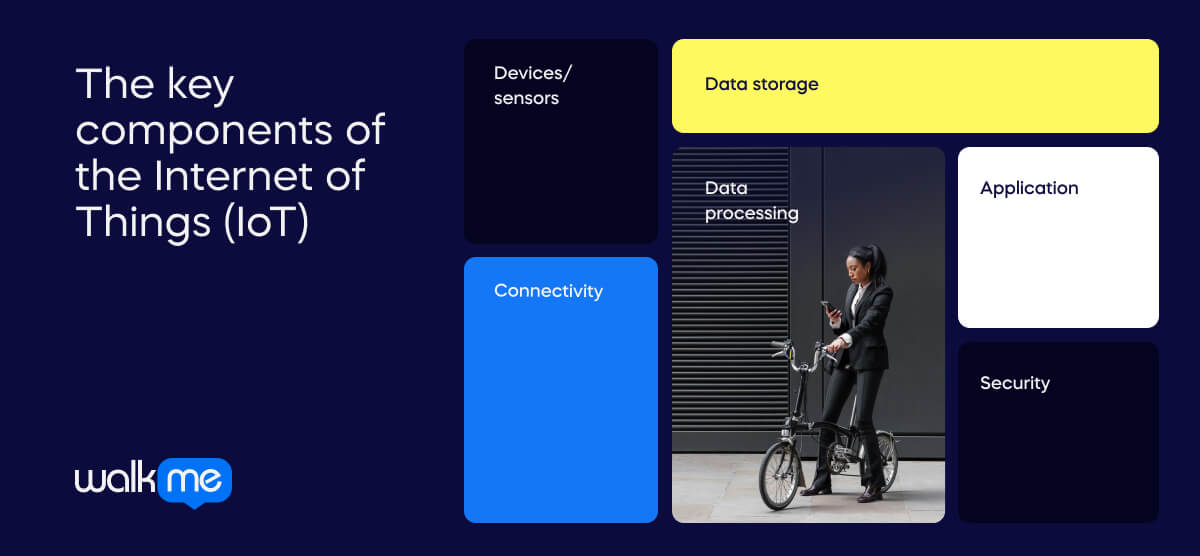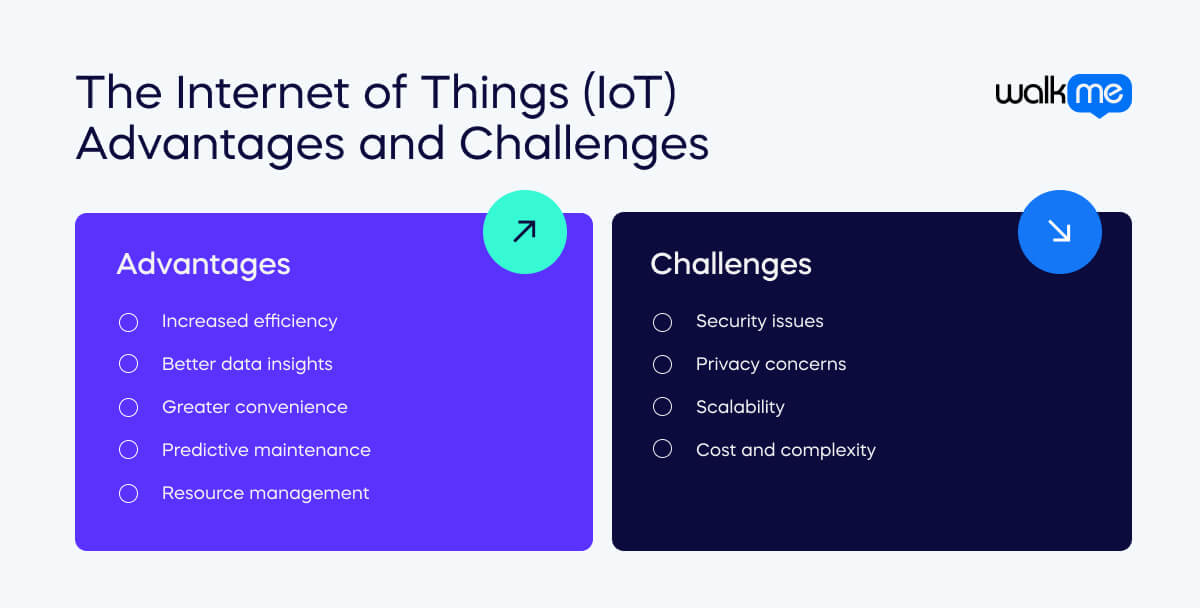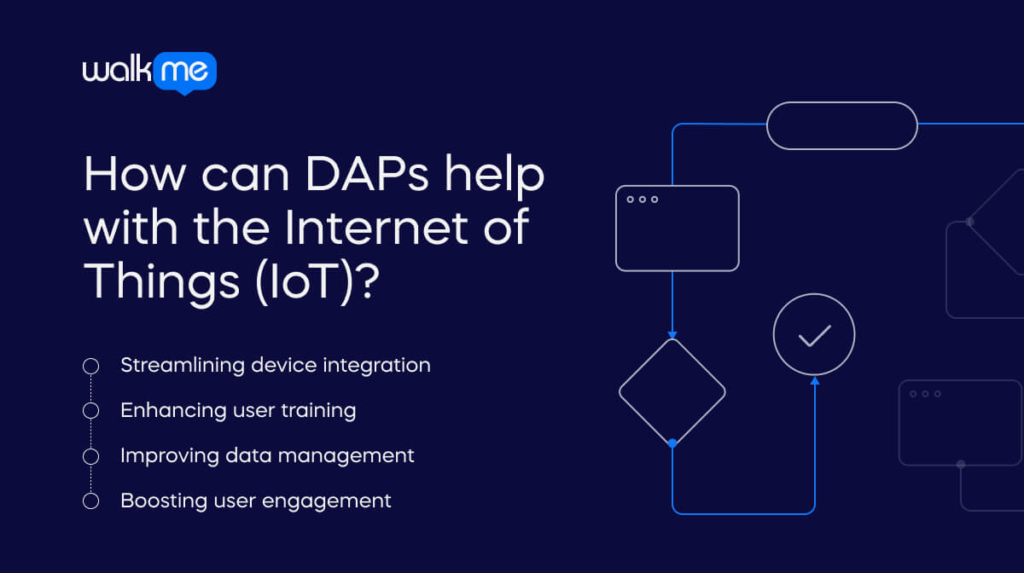What is the Internet of Things (IoT)?
The Internet of Things (IoT) is a system in which everyday objects are connected to the Internet and can talk to each other. These objects can collect and share data by adding sensors and software to devices like smart thermostats, fitness trackers, and even industrial machines.

For example, a smart thermostat can adjust the temperature based on your preferences, while a fitness tracker can monitor your physical activity and health. This connectivity makes life more convenient and efficient. In a smart home, IoT devices can automate tasks like turning off lights when you leave a room. In healthcare, wearables provide insights into your health, helping you manage it better. IoT helps monitor machinery in industries to predict when maintenance is needed, saving time and money. IoT aims to make our world smarter by allowing devices to work together and providing useful information that can improve how we live and work. IoT can’t be ignored—forecasts reveal that by 2025, over 75 billion connected devices will likely be in use.
What are the key components of the Internet of Things (IoT)?

To truly grasp how such interconnected systems come to life, it’s essential to examine the building blocks that make them work—from the sensors and devices gathering data to the networks enabling communication and the applications delivering personalized experiences. Here’s a breakdown of these components:
Devices/sensors
These are the physical objects embedded with sensors and actuators that collect data from the environment or perform specific tasks. Examples include smart thermostats, wearable health monitors, and industrial sensors.
Connectivity
The network infrastructure that enables devices to communicate with each other and with central systems. It includes various types of connectivity, such as Wi-Fi, Bluetooth, cellular networks, and other communication protocols.
Data processing
Once devices collect data, they must be processed to extract meaningful information. This can happen locally on the device (edge computing) or remotely on servers and cloud platforms. Data processing involves analyzing, aggregating, and interpreting data to make it actionable.
Data storage
The processed data is often stored in databases or cloud storage solutions. This storage is essential for retaining historical data and for further analysis.
Application
The end-user applications or systems that utilize the processed data. Applications can range from user interfaces on smartphones and computers to automated systems that control smart devices based on data insights.
Security
Ensuring the security of data and communication channels is critical in IoT. This involves encryption, authentication, and other security measures to protect against unauthorized access and cyber threats.
Internet of Things (IoT) vs. Internet of Everything (IoE)
The Internet of Things (IoT) and the Internet of Everything (IoE) both involve connecting devices. However, they differ in scope and integration.
- IoT focuses on connecting physical devices. It does this to improve automation and efficiency.
- IoE extends this to include people, processes, and data. It creates a smarter and broader network.
Understanding these differences shows how IoE expands on IoT. This provides a wider and more connected way to use data and solutions.
| Internet of Things (IoT) | Internet of Everything (IoE) | |
| Definition | Refers to a network of physical devices that connect and share data over the internet. It’s focused on making devices communicate to automate tasks and gather information. | Encompasses devices, people, processes, and data, creating a more integrated and intelligent system. It aims to connect all these elements for more comprehensive solutions. |
| Focus | Concentrates on linking physical devices and enabling them to exchange data to improve efficiency and automate tasks. | Broader focus that includes devices, people, processes, and data. It aims to create a more interconnected system for better decision-making and solutions. |
| Techniques | Uses sensors and communication technologies (like Wi-Fi and Bluetooth) to connect and control devices, with data being processed to perform specific tasks. | Builds on IoT techniques but adds advanced data analytics, cloud computing, and integration of multiple data sources for more detailed insights and interactions. |
| Goals | Seeks to enhance automation and functionality of devices by connecting them and improving their performance based on data. | Aims to create a smarter and more responsive world by integrating devices, people, processes, and data to optimize solutions and experiences. |
| Examples of use | Includes smart home devices like thermostats and lights, fitness trackers, and sensors in manufacturing. | Includes smart cities with interconnected infrastructure, optimized supply chains integrating various data sources, and personalized healthcare that combines patient data with medical insights. |
Use cases for the Internet of Things (IoT)
IoT technology is changing how businesses operate in many ways. It improves manufacturing, helps manage retail inventory, and optimizes fleet operations. Here are three examples that highlight IoT’s practical use in different business scenarios, illustrating how it works in these areas.
Smart manufacturing
- In a factory setting, IoT sensors can be installed on machinery and production lines to monitor performance, track efficiency, and detect maintenance needs.
- These sensors provide real-time data that helps predict equipment failures before they occur, reducing downtime and optimizing maintenance schedules.
- This leads to increased productivity and cost savings for the manufacturer.
Retail inventory management
- Retailers can use IoT-enabled smart shelves with weight sensors and RFID tags to monitor inventory levels in real-time.
- This system automatically updates stock information, triggers reordering when items are low, and provides insights into inventory turnover.
- This helps maintain optimal stock levels and enhances the shopping experience by reducing the likelihood of out-of-stock situations.
Fleet management
- Logistics companies can deploy IoT devices to track location, monitor fuel consumption, and assess driving behavior.
- This data helps optimize routes, improve fuel efficiency, and ensure timely deliveries.
- Additionally, real-time tracking allows for better fleet operations management and enhances overall service reliability.

What are the advantages of the Internet of Things (IoT)?
Discovering the benefits of the Internet of Things (IoT) shows how it improves many areas of business and daily life. From making tasks easier and providing useful data to enhancing convenience and saving resources, IoT offers practical advantages. Let’s look at how IoT boosts efficiency, helps with maintenance, and manages resources more effectively.
Increased efficiency
Automates tasks and optimizes processes, making operations run more smoothly and saving time and resources.
Better data insights
IoT devices gather and analyze data to help businesses make smarter decisions and improve strategies.
Greater convenience
Makes daily life easier by allowing people to control devices and systems remotely, like adjusting home temperatures or lighting from their phones.
Predictive maintenance
Monitors equipment in real-time, helping to fix issues before they cause problems and extending the life of machinery.
Resource management
Helps track and reduce resource usage, such as energy and water, leading to cost savings and environmental benefits.
What are the challenges of the Internet of Things (IoT)?
Looking at the challenges of the Internet of Things (IoT) helps us understand the obstacles in using this technology. Issues like security, privacy, and system compatibility can affect how well IoT works. Let’s discuss these key problems and how they impact the use of IoT.
Security issues
Keeping data safe from hackers and breaches is difficult with many connected devices.
Privacy concerns
IoT devices collect lots of personal data, raising worries about protecting and using this information.
Scalability
Managing a growing number of IoT devices and the data they generate can be tough as the system expands.
Cost and complexity
Setting up and maintaining IoT systems can be expensive and complicated, which can be a barrier for smaller businesses.
How can DAPs help with the Internet of Things (IoT)?

Digital adoption platforms (DAPs) play a key role in making Internet of Things (IoT) systems easier to use. They help connect devices, provide training, manage data, and improve user experiences. Let’s look at how DAPs support effective IoT implementation and usage.
Streamlining device integration
DAPs help simplify the process of connecting and managing various IoT devices by providing user-friendly interfaces and integration tools. This ensures that devices can work together seamlessly, improving overall system functionality.
Enhancing user training
They offer guided training and support for users interacting with IoT systems. This helps users understand how to use and manage IoT devices effectively, leading to better adoption and utilization.
Improving data management
The platform can help manage and visualize the vast amounts of data generated by IoT devices. It provides tools for data analysis and reporting, making it easier to extract valuable insights and make informed decisions.
Boosting user engagement
DAPs help users navigate IoT applications more easily by providing in-app guidance and support. This can improve user satisfaction and ensure IoT solutions are used to their full potential.